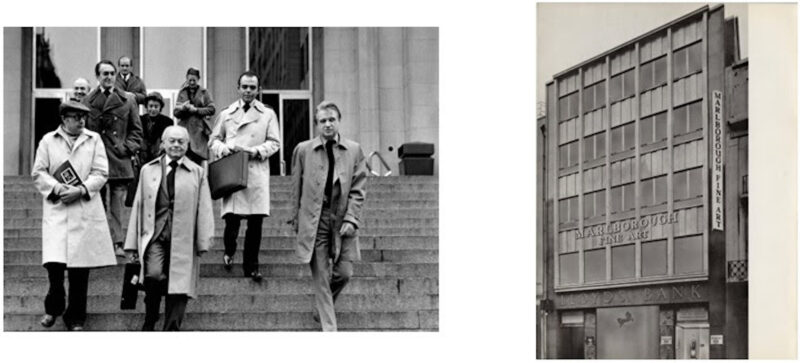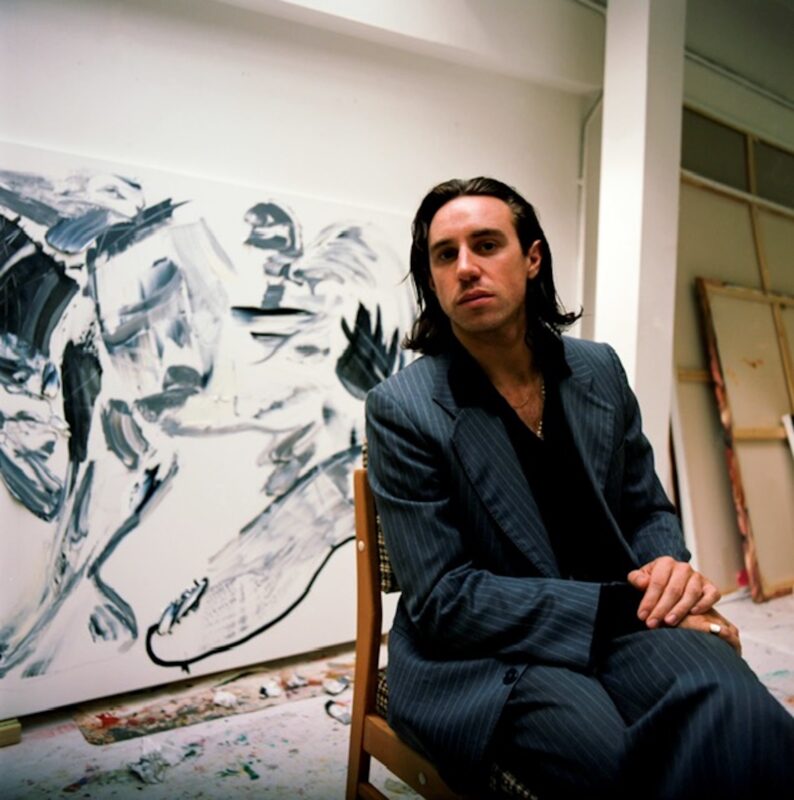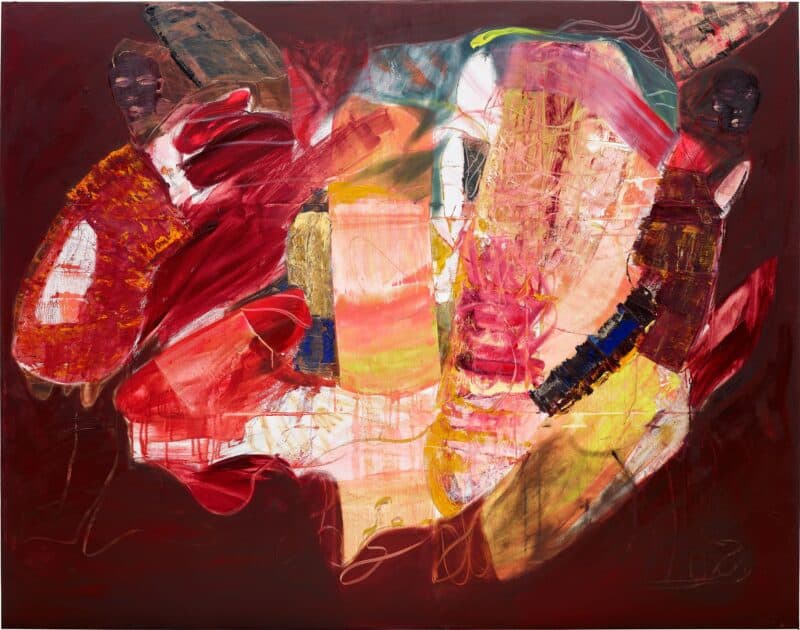Marlborough London to present a solo exhibition of new works by Alexander James entitled Tuck Shop For The Wicked.
Treating each of the eight new canvases as a visual cache to the past and present, James draws on material fragments such as letters, photographs, memorabilia, and ancient artefacts with conversations, memories, and inherited emotions. Mixing real and imagined experiences, the canvases flit between conscious and unconscious memory, captured by James’ depiction of his enigmatic great-grandfather: Henry Kaminsky. His profile is depicted in layers of kinetic mark-making, warm hues and brushstrokes scraped away into abstract forms.

Progressing to the shop next door. Opens a colourful world of sweets varying in size, colour and depth. Stood tall was Henry Kaminsky, on his second encounter, his second direction—the saloon was running itself by this point, so it was time to neighbour another local enterprise.
A place where affairs would regularly occur, in a place so innocent, only to find the fingerprints brushed and spread onto the steel surfaces in the back room where all the escapades transpired.
These paintings are a hybrid of details, focusing on the manoeuvres and antics that occurred during a timeline of owning this ‘Tuck Shop’ a modified word I’ve used to relate it to my own sweet tooth fascination, looking at transpired events filled with love, affairs, arguments, and business deals.
Stripping it down to the bare minimum, exposing elements which can get left behind. How would the candy selection respond if woken at night to find a couple going at it
– Alexander James
When James was a child, he visited the British Museum with his grandfather admiring ancient stone sculptures, entablatures, and friezes. James recalls looking upwards towards the heroic forms carved into stone, taking note of the strength and stoicism of the figures. Revisiting these statues in his portraiture, James attempts to re-engage with the memory of his grandfather, utilising their refined figures as the compositional basis of each work. James’s biomorphic forms appear as fragments that are transformed through his thick painterly strokes that reveal an abstracted portrait of his grandfather as well as engender new hybrid monuments to this childhood memory.
More than just a demonstration of formal possibilities, this exhibition attests to the ways in which abstraction has allowed James to charge portraiture with history by collating two parallel histories— those of his family, and those of the art historical references he draws against. In this way, these works return us to the question of objectivity that James’s corporeal abstractions seem to grapple with: can abstraction ever be detached from lived experience? Painted using a palette that recalls the candies that were sold at his great grandfather’s “Tuck Shop,” James explores notions of time passing. Continuing to expand his painterly techniques, James disrupts an easy consumption or reading of his images by using both a heavily layered—or additive process—as well as the removing of paint—or subtractive process—which diffuses compositional clarity. The paintings take on a spectral, transcendent quality as if seen through a fog that only gradually lifts as we begin to discern the figures, making reception of them slower, and pushing them towards abstraction.
James’ simultaneous push and pull of adding and then taking away creates an interesting paradox that aligns with the ancient practice of Damnatio Memoriae, a Latin phrase meaning ‘condemnation of memory’. Often practised across ancient civilisations of Greece, Egypt and Mesopotamia, this entailed a ritualistic destruction of images whereby an individual might be literally carved out from coins, iconography and tablets. The potency of these imperial images is further testified to their fate following the death of an emperor, or leader. A recurring feature of imperial history is that where an unpopular emperor was violently removed from power, whether assassinated or usurped by a military coup, his images were also violently deposed. Statues were pulled down and attacked, names on inscriptions were hacked away, and coins melted down. These empires, however, did not see a reduction in the importance of the past but rather a reshaping of it.
Strong parallels can be drawn to James’s works and the ways in which he repurposes the memories of his forefathers alongside emblems of ancient iconography. Like Damnatio Memoriae the act of erasure in his paintings heed to continually alter and refashion stories from his family lineage, a collection of mnemonic devices, his works serve not only to celebrate the complex language of memory but to reconsolidate the importance of muses from both the immediate present and past.
Alexander James: Tuck Shop For The Wicked,23rd September – 16th November 2023, Marlborough London Private View: 22 September 2023, 6-8PM
About the artist
Alexander James (b. 1993) received a Bachelor’s from Camberwell College of Art in 2015. His work has been shown at Super Zoom, Paris; Room 57 Gallery, New York; Kopenicker Str. 80, Berlin; Plan X Gallery, Milan and Marlborough Gallery, London. James currently lives and works in London.









